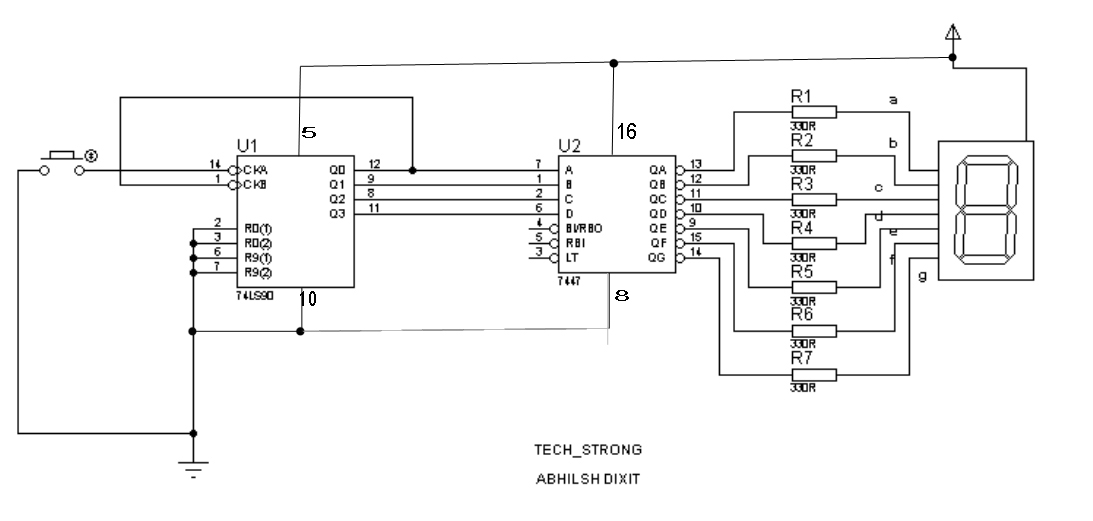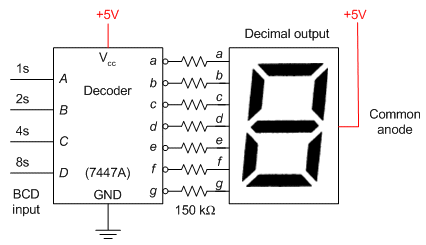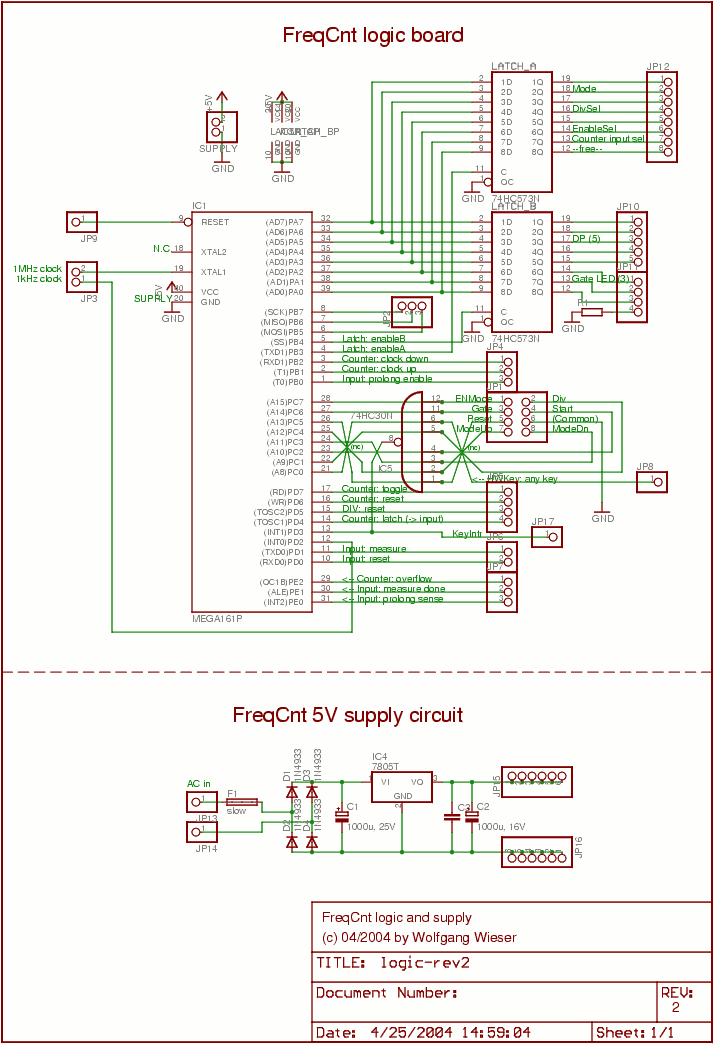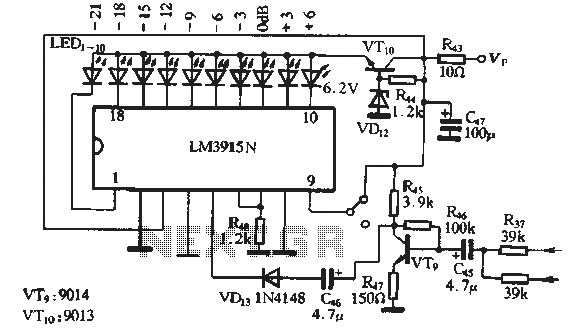
7 SEGMENT DISPLAY COUNTER / INCOMING PERSON COUNTER

This project allows for the display of digits from 0 to 9 on a seven-segment display while counting the number of people entering a room. A counter IC, the 7490, is utilized alongside a BCD to seven-segment decoder IC, the 7447. The 7490 provides the counting value, which the decoder IC translates into a seven-segment output. Each time a switch is pressed, the clock of the IC 7490 is triggered, resulting in an increment of the count. This straightforward circuit can be easily implemented on a general-purpose PCB. Instead of a manual switch, a Light Dependent Resistor (LDR) is employed at the entrance. The LDR is positioned so that the shadow of an entering person falls directly on it; when the shadow is detected, the clock of the IC 7490 is triggered, leading to an increase in the count by one. The circuit includes a variable resistor to adjust the resistance, ensuring synchronization with light intensity for optimal performance.
The circuit operates primarily through the interaction of the 7490 counter and the 7447 decoder. The 7490 is a decade counter that counts from 0 to 9 in binary-coded decimal (BCD) format. Each pulse received at its clock input increments the count by one. The 7447 decoder then takes this BCD output and drives the seven-segment display, lighting up the appropriate segments to visually represent the count.
In this application, the use of an LDR enhances the circuit's functionality by automating the counting process. When a person approaches the entrance, their shadow falls on the LDR, causing a change in resistance. This change is detected as a pulse, which triggers the clock input of the 7490. The variable resistor allows for fine-tuning of the LDR's sensitivity, ensuring that it only responds to significant changes in light intensity, such as the presence of a person.
The seven-segment display is connected to the outputs of the 7447, which controls which segments are illuminated based on the current count. The circuit can be easily assembled on a general-purpose PCB, making it accessible for various applications, such as in offices, homes, or public spaces for counting foot traffic. This project not only serves as a practical counting solution but also provides an excellent learning opportunity for understanding digital electronics and the interaction of various components in a circuit.With this project we can display 0-9 digits on the 7 segment and we can count the no of persons entering in the room. Here a counter IC 7490 is used along with BCD to 7 segment decoder IC 7447. The function of 7490 is to provide the counting value and decoder IC is decoding that value to 7 segment output.
Every time when you will push the switch the clock of IC7490 will be triggered and as a result count will increase by 1. Hence with this simple project we can display numbers 0 to 9 on seven segment display just by pressing switch. It`s a very easy circuit and you can easily implement it on a general purpose PCB. So instead of using switch we will use LDR here, we will place LDR at the entry door in such a manner that the shadow of the entering person should fall directly on LDR, when shadow will fall on LDR clock of IC 7490 will be triggered and as a result the count will increase by one.
Circuit wilh some small changes is as shown. Variable resistor is used to adjust the resistance to synchronize the light intensity for better results. 🔗 External reference
The circuit operates primarily through the interaction of the 7490 counter and the 7447 decoder. The 7490 is a decade counter that counts from 0 to 9 in binary-coded decimal (BCD) format. Each pulse received at its clock input increments the count by one. The 7447 decoder then takes this BCD output and drives the seven-segment display, lighting up the appropriate segments to visually represent the count.
In this application, the use of an LDR enhances the circuit's functionality by automating the counting process. When a person approaches the entrance, their shadow falls on the LDR, causing a change in resistance. This change is detected as a pulse, which triggers the clock input of the 7490. The variable resistor allows for fine-tuning of the LDR's sensitivity, ensuring that it only responds to significant changes in light intensity, such as the presence of a person.
The seven-segment display is connected to the outputs of the 7447, which controls which segments are illuminated based on the current count. The circuit can be easily assembled on a general-purpose PCB, making it accessible for various applications, such as in offices, homes, or public spaces for counting foot traffic. This project not only serves as a practical counting solution but also provides an excellent learning opportunity for understanding digital electronics and the interaction of various components in a circuit.With this project we can display 0-9 digits on the 7 segment and we can count the no of persons entering in the room. Here a counter IC 7490 is used along with BCD to 7 segment decoder IC 7447. The function of 7490 is to provide the counting value and decoder IC is decoding that value to 7 segment output.
Every time when you will push the switch the clock of IC7490 will be triggered and as a result count will increase by 1. Hence with this simple project we can display numbers 0 to 9 on seven segment display just by pressing switch. It`s a very easy circuit and you can easily implement it on a general purpose PCB. So instead of using switch we will use LDR here, we will place LDR at the entry door in such a manner that the shadow of the entering person should fall directly on LDR, when shadow will fall on LDR clock of IC 7490 will be triggered and as a result the count will increase by one.
Circuit wilh some small changes is as shown. Variable resistor is used to adjust the resistance to synchronize the light intensity for better results. 🔗 External reference





